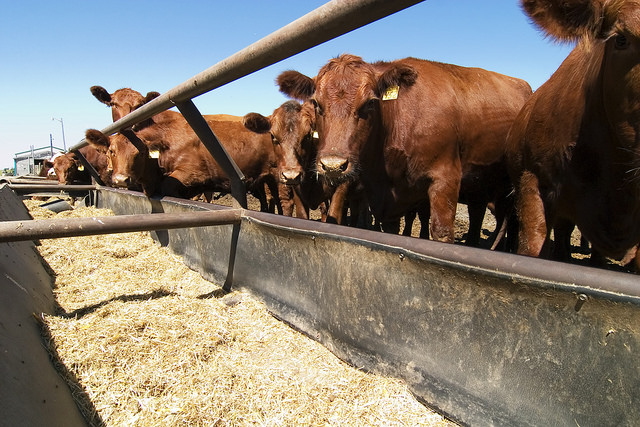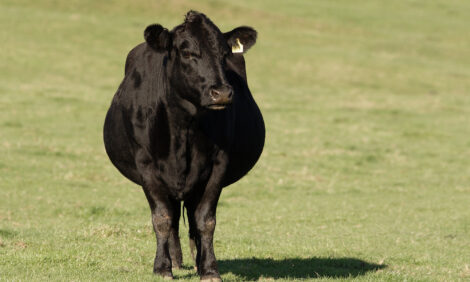



Research Reveals Sizeable Variation in Feed Use Efficiency
Efficiency of feed use in comparable groups of bulls and steers can vary by as much as 25 per cent, according to initial research results presented at the recent Breeding Improvement Group conference in Yorkshire.The results come from on-going research being carried out at the Beef Improvement Group’s Wold Farm test unit near Givendale in East Yorkshire.
So revealed Dr Jimmy Hyslop, SRUC Beef Specialist, when speaking at Askham Bryan college as part of the ‘Breeding Precision Drives Profitable Solutions’ conference in November.
Dr Hyslop equated the variation in net feed efficiency to feed cost savings, pointing out that the difference could be worth as much as £100 per place on a finishing unit over a year.

The research is part of a five year project led by the Beef Improvement Group, funded by Innovate UK, that has been set up to develop net feed efficiency as an estimated breeding value that can be used to help beef producers breed more feed efficient cattle and thereby boost profitability.
“Net feed efficiency should not be confused with feed conversion rate,” he said. “It is a biological measure of feed use efficiency, and takes account of maintenance and other factors and not only liveweight gain.
“The amount of variation in animals’ ability to use feed efficiently is significant, but is maybe not that surprising.
"As all stockmen know, every yard of cattle contains good doers and those that do less well. What we are developing here is a way of identifying the genetics that affect this ability to grow well or less well off the same feed intake.”
The project has been run mainly with Stabiliser bulls and steers, but has also included Beef Shorthorns that have demonstrated the same variation in net feed efficiency.
Now into its fifth year, the project has collected data from over 860 cattle, each one being monitored for dry matter intake, daily liveweight gain, carcase fat depth and other parameters over an 8-week feeding period.
Additional work has been done alongside the feeding trials to show that net feed efficiency has no impact on carcase weight or specification, or on the eating quality of the beef.
“This project sets the standard for feed efficiency measurement in beef cattle for the UK and the Stabiliser will be the first breed to have an Estimate Breeding Value (EBV) for net feed efficiency,” said Dr Hyslop.
The project is due to be completed in just over a year’s time. Net feed efficiency is a heritable trait that will apply equally to the dam and to the finishing progeny. It will make a very real financial difference to the bottom line of finishing beef units and suckler cow farms in the future.”


